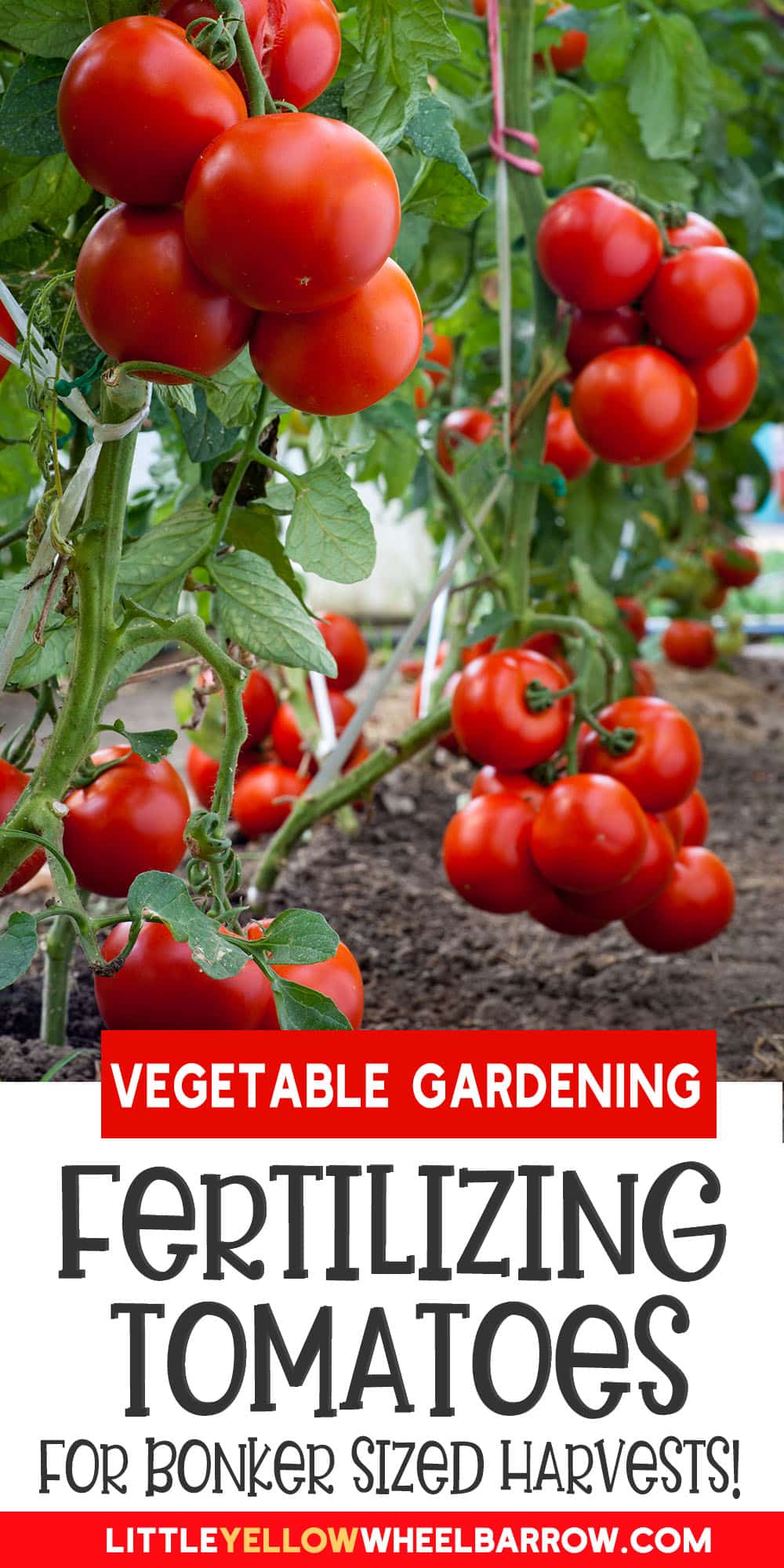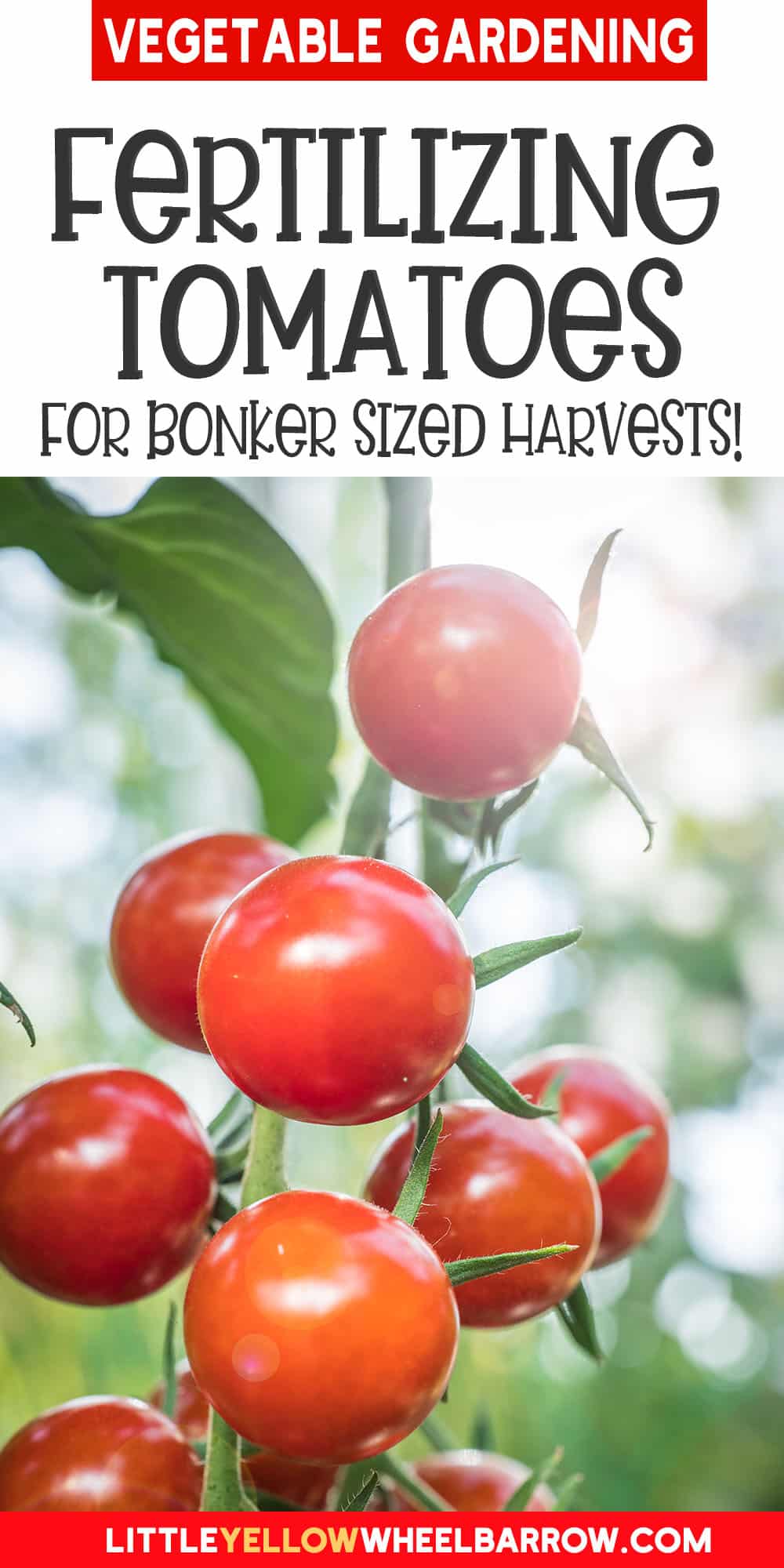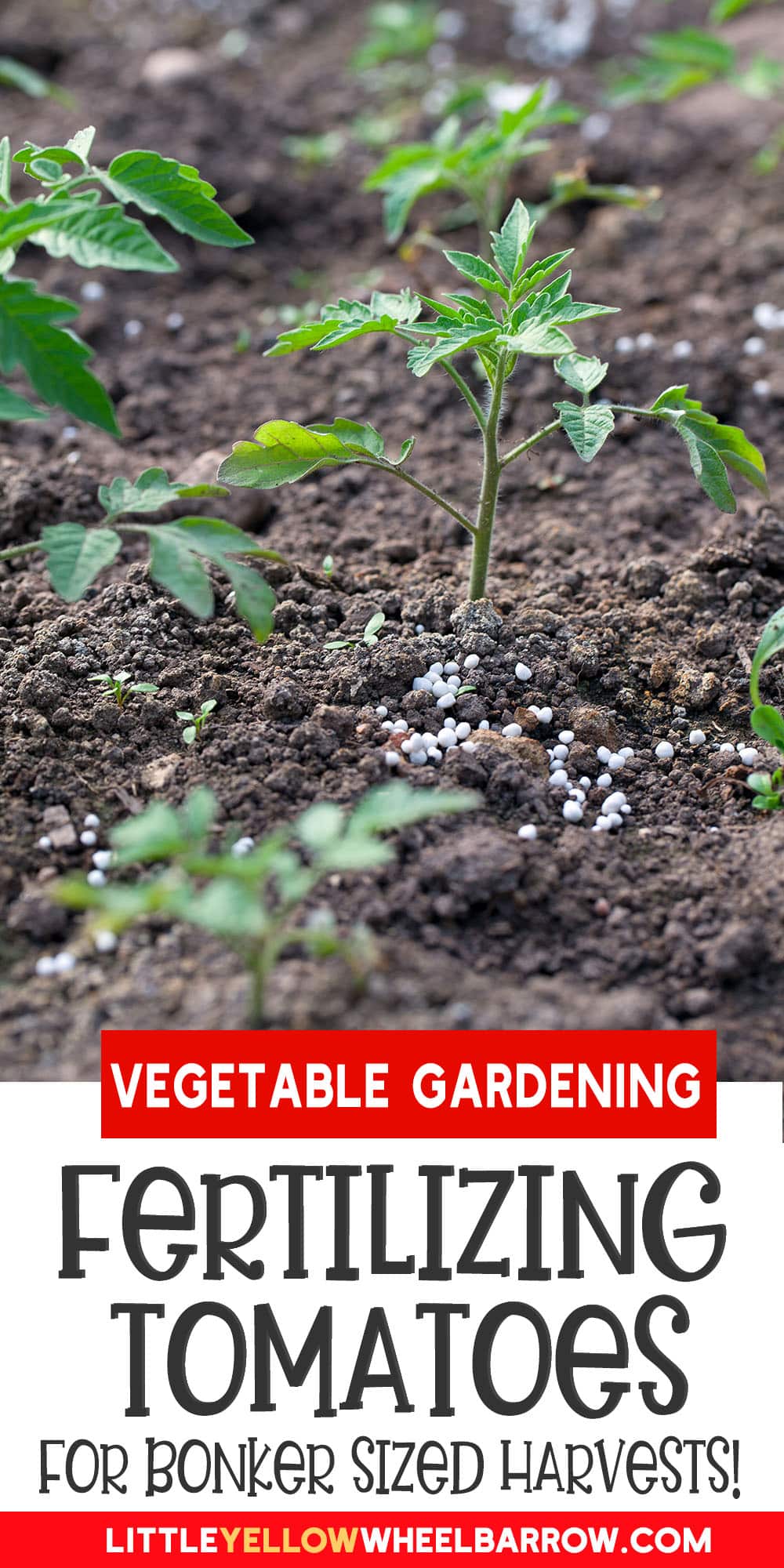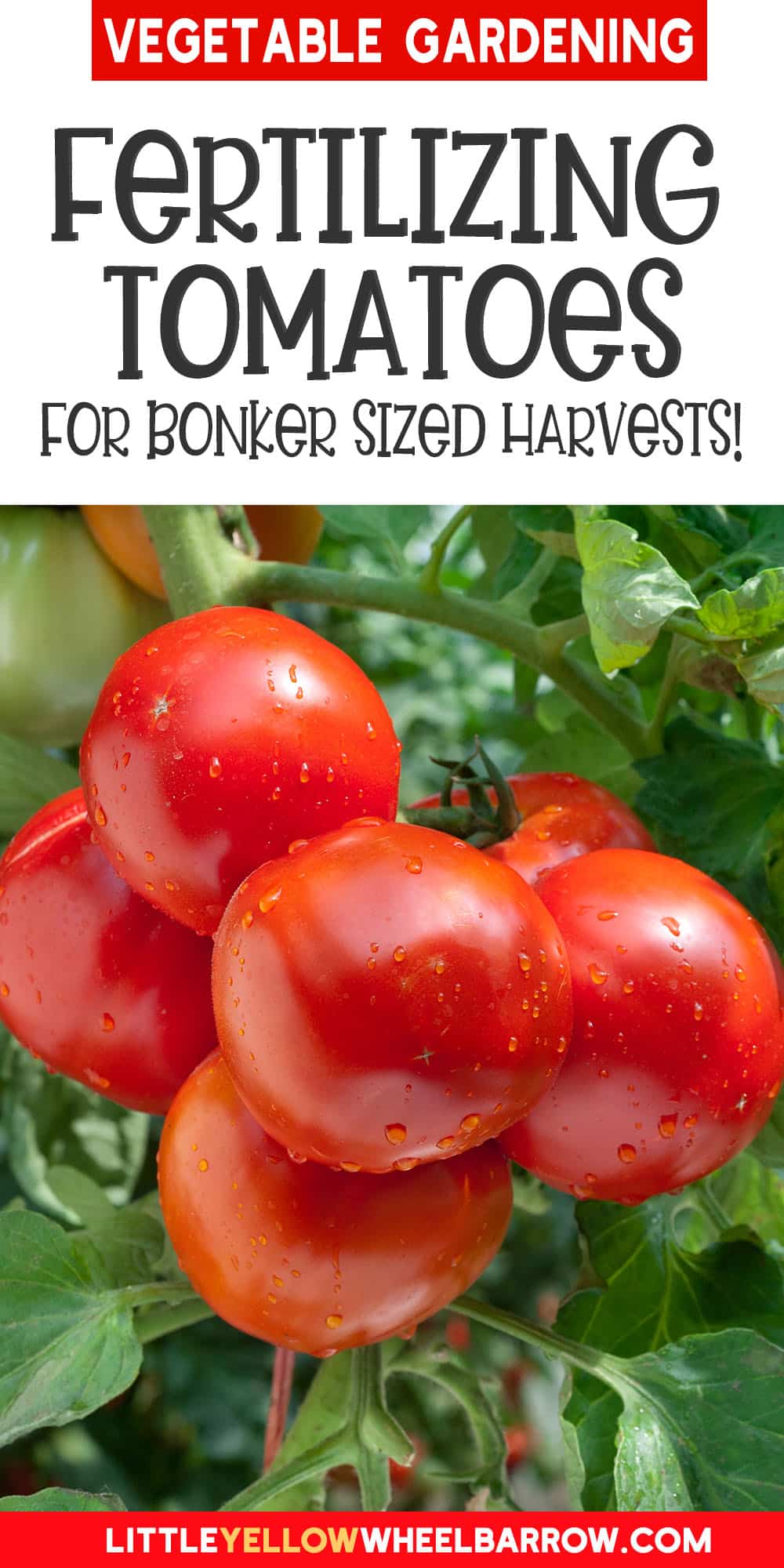The Best Fertilizer For Tomatoes And Proper Application Tips!
Are you looking to boost the growth of your tomato plants? Providing proper nutrients is crucial for the success of your tomato seedlings, and fertilization plays a vital role in ensuring their well-being. We have tips for the best fertilizer for tomatoes and walk you through when and how to apply that fertilizer so your tomatoes are the envy of the neighborhood.
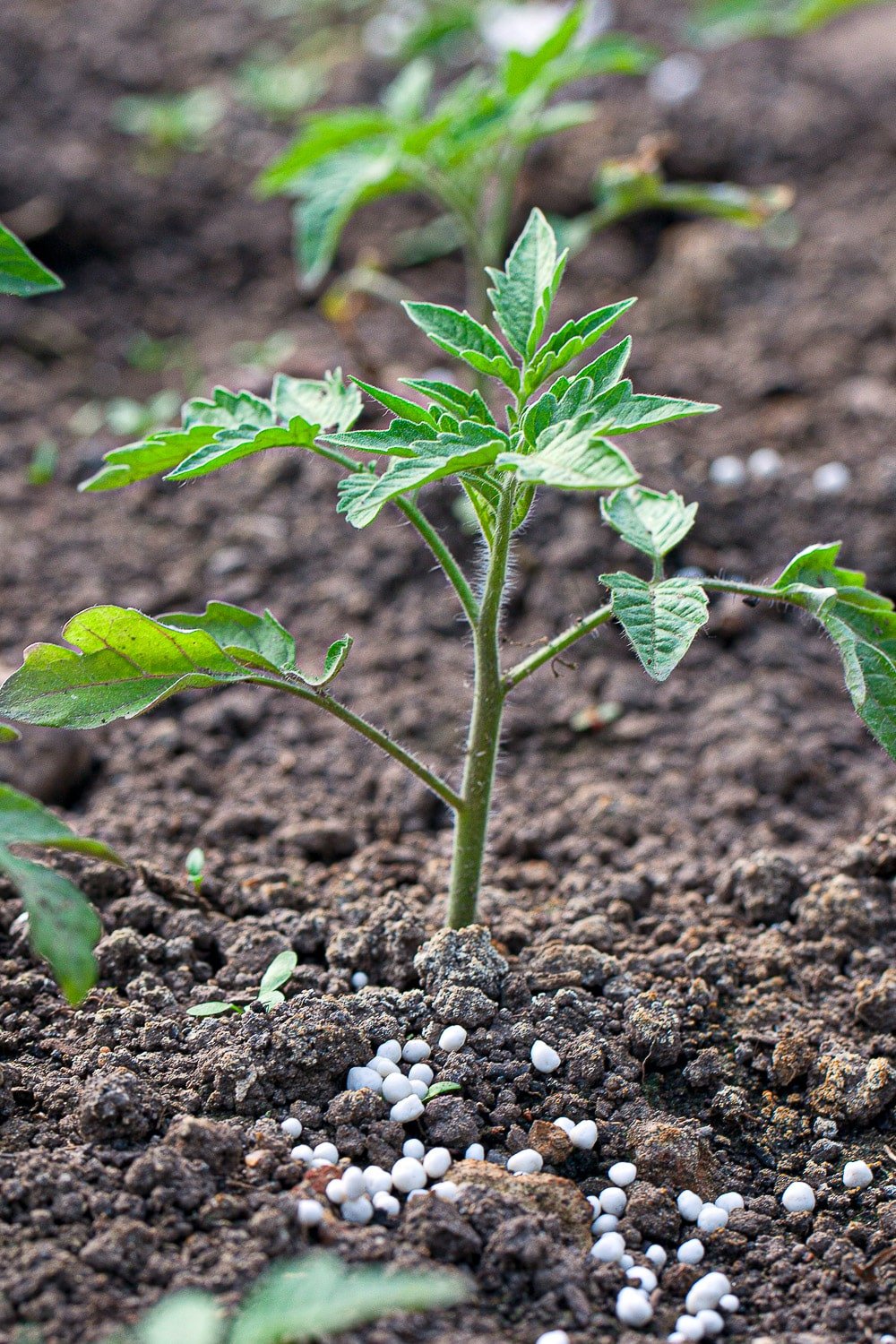
Key Points:
- Proper timing is essential for fertilizing tomato plants.
- Use balanced fertilizer early in the season to establish strong root systems.
- Transition to a higher-phosphorus fertilizer for flower and fruit development.
- Apply every 2-3 weeks during the growing season and stop fertilizing tomato plants toward the end of the season.
- The proper application starts with testing your soil and choosing your preferred method (broadcast, foliar spray, or side dressing).
When to Fertilize Tomato Plants And How Nutrient Needs Change During The Season
Determine the ideal timing for applying fertilizer.
To ensure healthy and productive tomato plants, it is crucial to determine the right time for fertilization. Consider factors such as plant age and growth stage when applying fertilizer. Young tomato plants require different nutrients than mature ones, so adjusting your fertilization schedule is essential.
Consider the impact of weather conditions.
Weather conditions can significantly affect the timing of fertilizer application for tomato plants. Aim to fertilize when the soil is moist but not waterlogged, as excessive moisture can hinder nutrient absorption. Avoid fertilizing during extreme heat or drought, which can stress the tomato plants and lead to nutrient imbalances.
Early season fertilization
Providing a slow-release or balanced fertilizer is beneficial during planting or early in the growing season. Early fertilization helps establish robust root systems and promotes overall plant growth. Applying fertilizer at this stage provides a solid foundation for healthy tomato plants throughout their lifespan.
Early in the season, use a balanced fertilizer, such as a 10-10-10 or similar NPK ratio.
You can apply every 2-3 weeks during the early growing season.
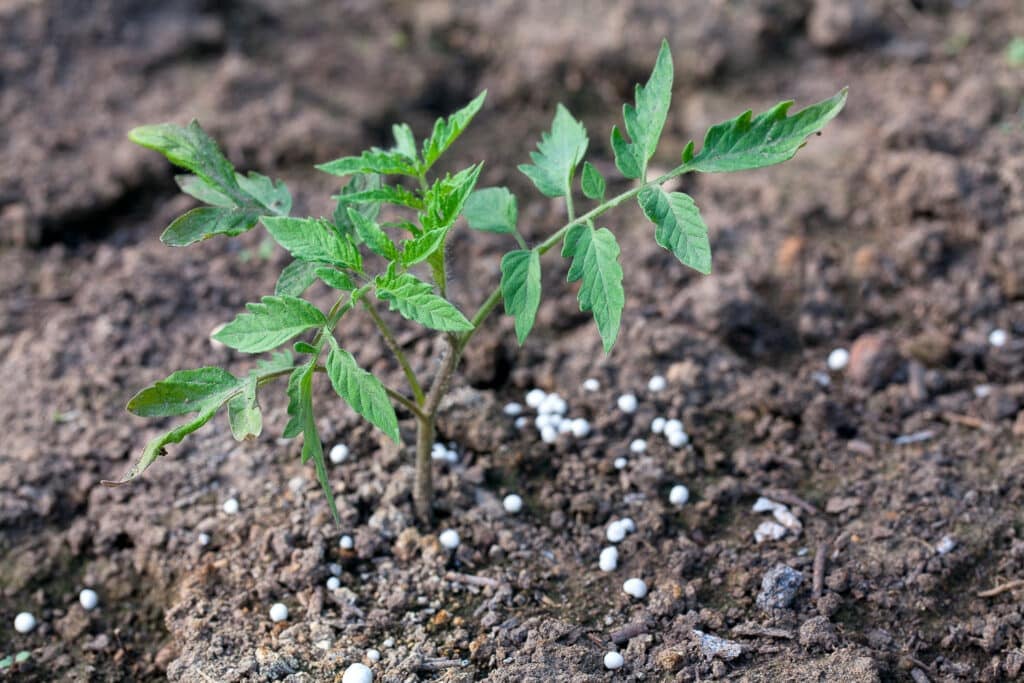
Mid-season fertilization
As your tomato plants continue to grow and produce fruit, they will benefit from additional doses of fertilizer. Mid-season fertilization helps replenish nutrients that may have been depleted from the soil due to ongoing plant growth and fruit production.
As fruit production increases, consider shifting towards a fertilizer with a higher phosphorus content (e.g., 5-10-10) to support flower and fruit development.
Apply every 2-3 weeks during the mid-season growing season.

Late season considerations
Reduce or stop fertilizing your tomato plants towards the end of the growing season. Halting fertilization allows the tomato plants to transition into maturity naturally and helps prepare them for harvest. Excessive nitrogen during this period can result in lush foliage but fewer fruits.
Remember that each variety of tomato may have specific requirements, so it’s always best to refer to seed packets or consult with local experts for precise guidelines on when and how much fertilizer should be applied.
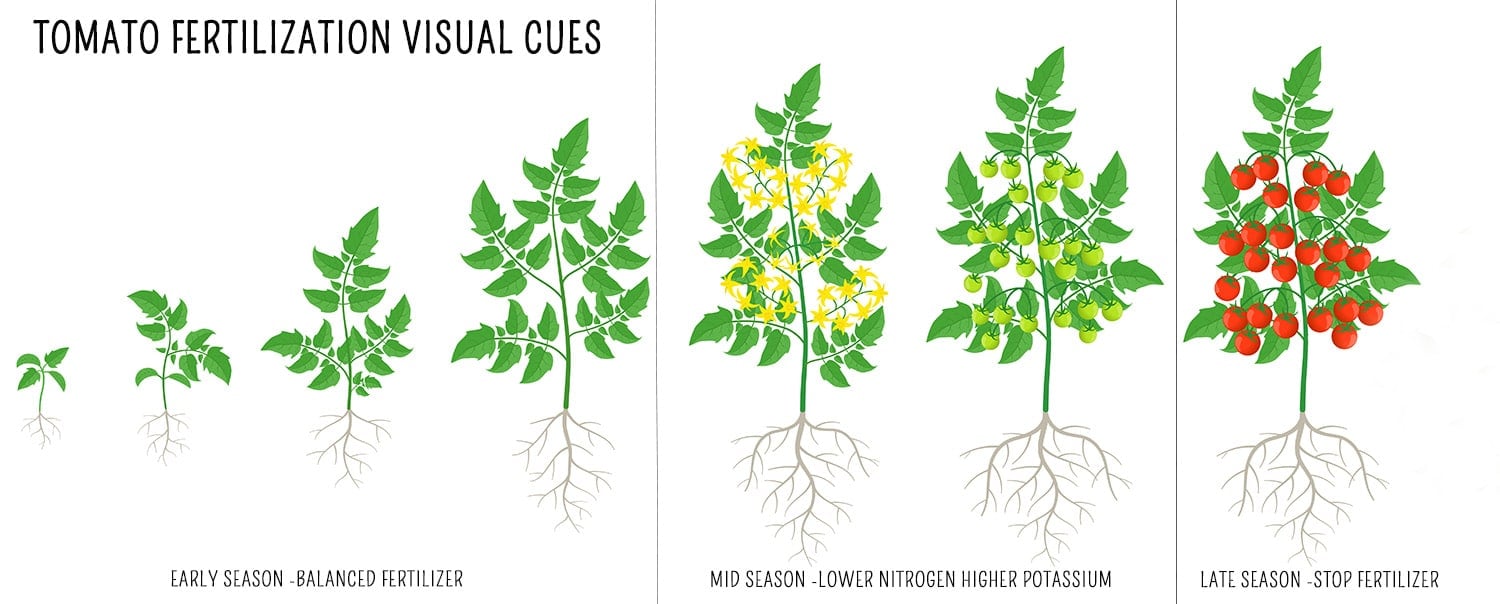
Special Consideration – Slow Release Fertilizer
Slow-release formulas can save time by providing a longer interval between fertilization schedules. Be sure to check your package to see how long your slow-release fertilizer will last, and make a note. Be sure to change the fertilizer mid-season to avoid over-fertilizing with nitrogen when the plants start setting flowers and developing fruit.
Organic Tomato Plant Fertilizers – Natural Sources
When it comes to fertilizing tomato plants, you have two options, organic and synthetic, and it’s important to discuss why you should be using organic fertilizers on your tomato plants and in your garden.
Key Nutrients for Tomato Growth
Nitrogen (N) is essential for leafy green growth in tomato plants, while phosphorus (P) aids root development and fruit production. Potassium (K) helps with overall plant vigor and disease resistance. When choosing a fertilizer, it’s essential to consider the NPK ratio that suits your tomato plants’ specific needs.
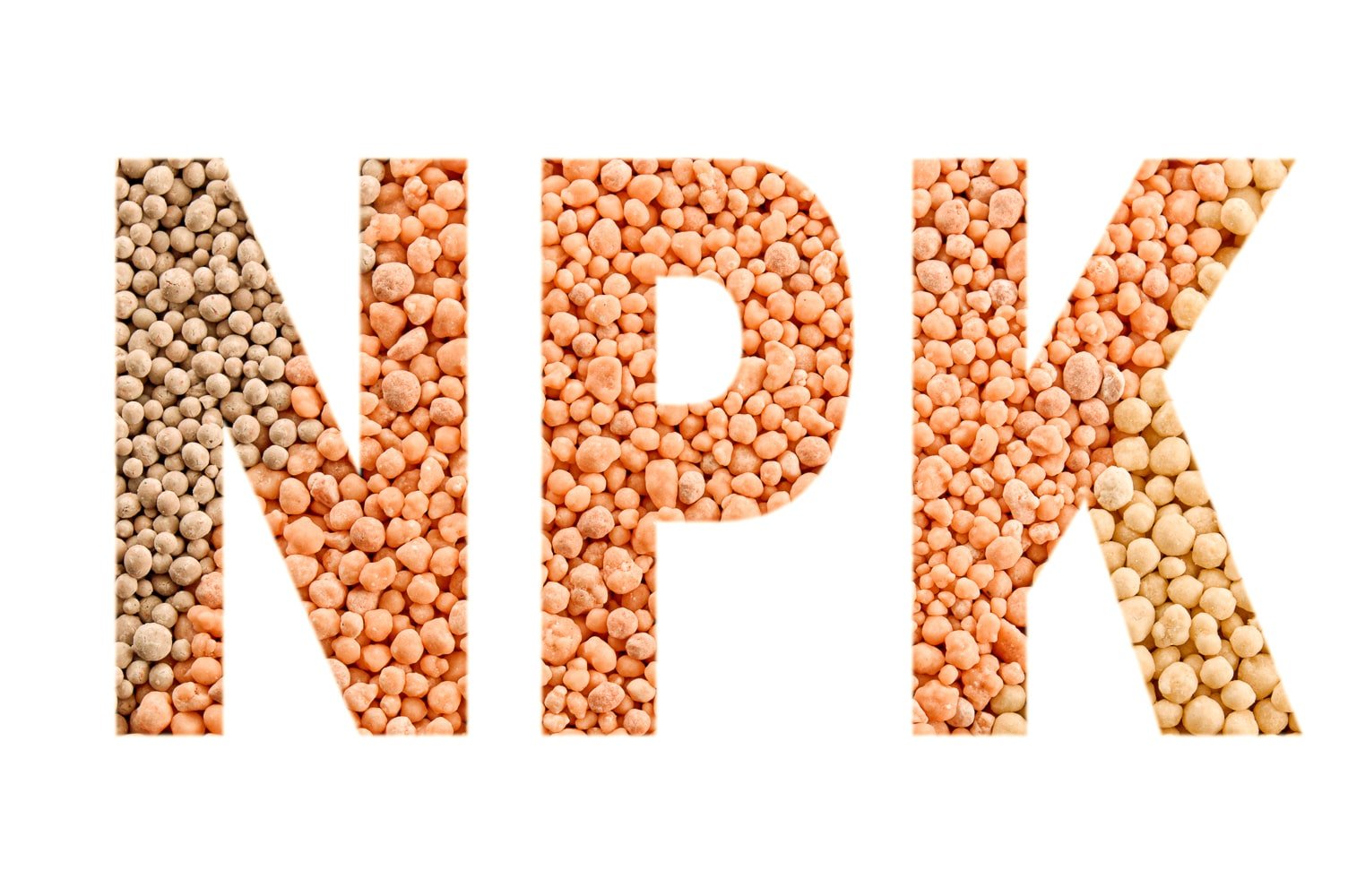
Organic Fertilizers for Tomato Plants
You have a variety of options to choose from. One popular choice is organic fertilizer from natural materials like compost, manure, or bone meal. Organic fertilizers are known for their slow-release properties, providing a steady supply of beneficial nutrients to plants over time. They also improve soil health and promote beneficial microbial activity.
Organic Materials For Fertilizing Tomato Plants
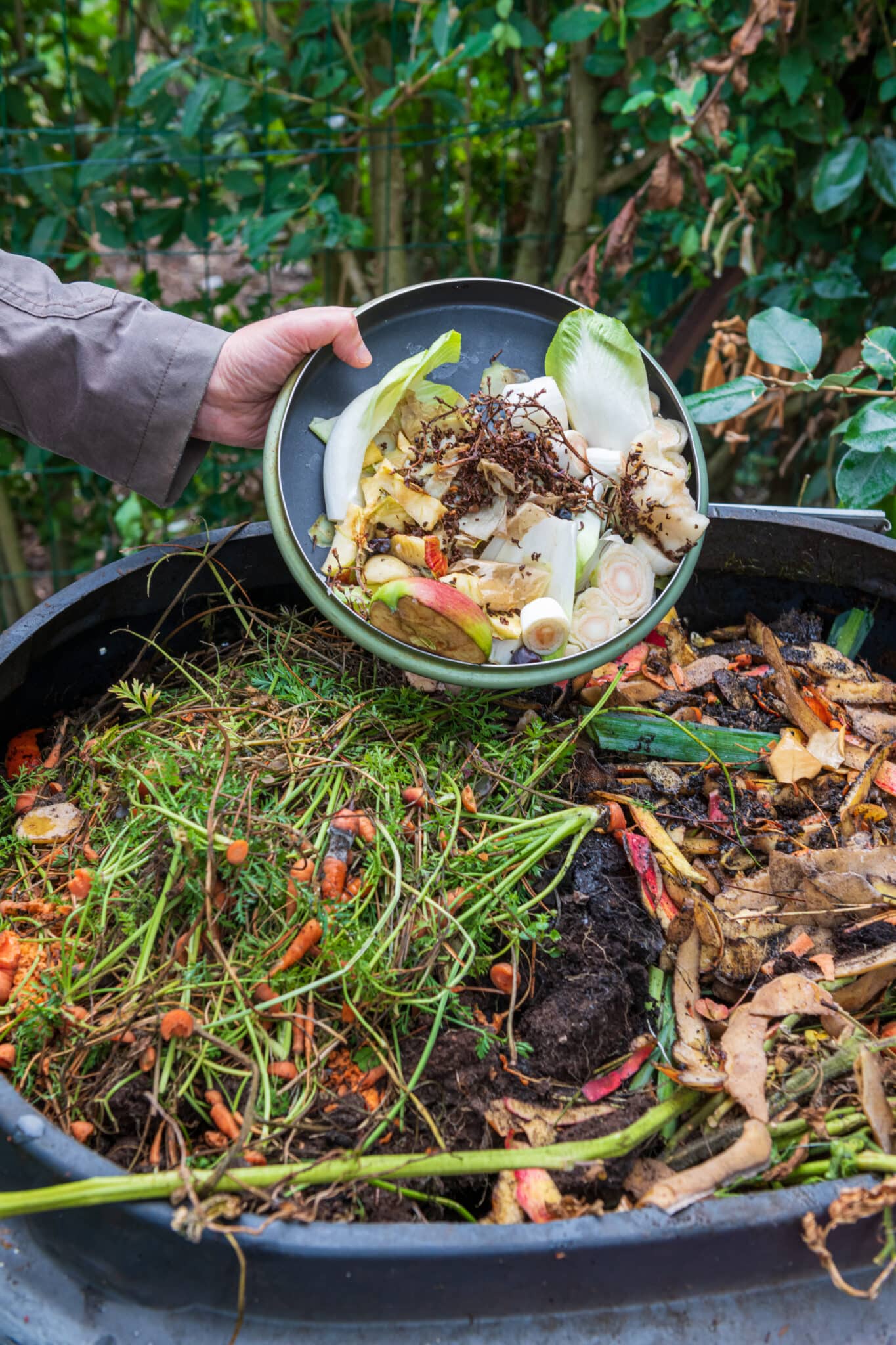
Organic materials that provide nitrogen, phosphorus, or potassium and can be used to enrich garden soil include:
Nitrogen Fertilizer for Tomatoes
- Compost: Composted organic matter, such as kitchen scraps, yard waste, and manure, is a good nitrogen source.
- Alfalfa Meal: Alfalfa meal is a slow-release nitrogen source derived from dried and ground alfalfa plants.
- Blood Meal: Blood Meal is a fast-acting nitrogen-rich fertilizer from dried animal blood.
- Feather Meal: Feather meal is derived from poultry feathers and is a slow-release nitrogen source.
- Fish Emulsion: This liquid organic fertilizer from fish byproducts provides a quick nitrogen boost.
Phosphorus Fertilizer for Tomatoes
- Bone Meal: Bone meal is produced from crushed and ground animal bones, providing phosphorus and calcium.
- Rock Phosphate: This natural mineral source contains phosphorus and is a slow-release option.
- Seabird Guano: Guano from seabirds is high in phosphorus and other essential nutrients.
- Fish Bone Meal: Made from fish bones, it offers phosphorus and calcium for plant growth.
Potassium Fertilizer for Tomatoes
- Wood Ash: Wood ash from burned plant material is a potassium source and raises soil pH.
- Kelp Meal: Kelp meal is dried seaweed and provides potassium along with other micronutrients. We now live next to the sea and can get an abundance of seaweed (we still have to buy it; it’s illegal to take it), but it’s easily found. We’ve found it an excellent addition to our compost and gardens. I’d almost say it’s magical.
- Greensand: Greensand is a natural mineral containing potassium and trace minerals.
- Potash: Potash, or potassium carbonate, is an excellent source of potassium for garden use.
These organic materials can help maintain nutrient balance in the soil and promote healthy, robust plant growth without relying on synthetic fertilizers. Testing your soil and adjusting nutrient additions based on your garden’s needs is essential.
We only use organic fertilizer on our acreage, and although we would love to use compost, we can’t make it fast enough or in enough volume for what we need. When we need something with specific ratios of NPK, we often lean on brands like Espoma or Dr Earth when we need to go beyond what we can make ourselves.
The Best Reviewed Organic Fertilizers You Can Buy For Your Tomato Plants
Affiliate Disclosure
This post may contain affiliate links. If you click one and purchase, I may receive a commission at no additional cost. You can read our disclosure policy here.
The choice of the best organic tomato fertilizer can depend on various factors, including your preferences, budget, and the specific needs of your tomato plants. Here are some highly regarded organic tomato fertilizers that you can consider purchasing online:
- Espoma Tomato-tone: Espoma is a well-known brand for organic fertilizers, and Tomato-tone is specially formulated for tomatoes. It contains a blend of natural ingredients to support healthy tomato growth.
- Dr. Earth Organic Tomato, Vegetable & Herb Fertilizer: Dr. Earth’s fertilizer is rich in organic ingredients and beneficial microbes that enhance soil health and tomato plant development.
- Jobe’s Organics Vegetable & Tomato Fertilizer: Jobe’s offers a convenient spike-style fertilizer that’s easy to apply. It’s made from organic materials and has a balanced NPK ratio.
- Fox Farm Organic Big Bloom Liquid Concentrate Fertilizer: This liquid concentrate is rich in nutrients and is designed for organic gardening. It can be used as a root drench or foliar feed.
- Neptune’s Harvest Organic Hydrolized Fish & Seaweed Fertilizer: This liquid fertilizer combines fish and seaweed for a well-rounded source of nutrients. It’s easy to apply and provides essential micronutrients.
When choosing a fertilizer, check the product’s NPK ratio and consider your specific tomato plant’s needs and timing. Also, read user reviews and product descriptions to find one that aligns with your gardening goals.
Additionally, some of these fertilizers may be available on various online marketplaces, garden supply stores, and the official websites of the respective brands. Shopping around can definitely save you some money!
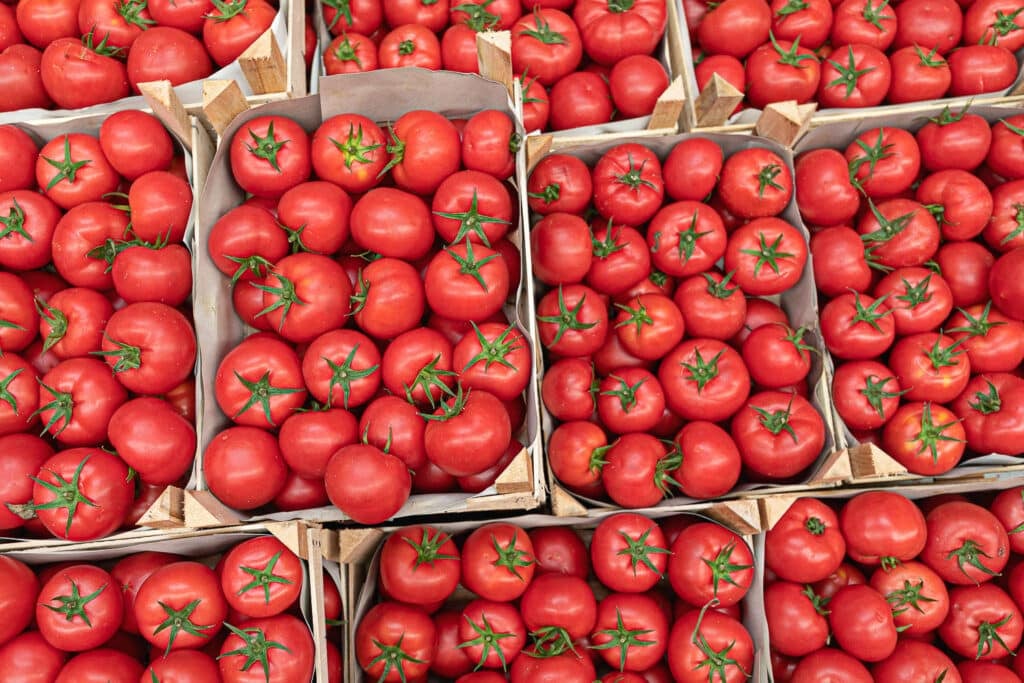
Reasons Why You Should Avoid Synthetic Fertilizers For Tomato Plants
On the other hand, synthetic type fertilizers are manufactured using chemical compounds. These fertilizers often come in granular or liquid form and provide an immediate nutrient boost to the plants.
We’re not fans of synthetic fertilizers for many reasons, but here are a few of the big ones.
Synthetic fertilizers can cause and lead to:
- Nutrient Imbalance: Limited nutrients may lead to imbalances in soil.
- Environmental Pollution: Excessive use can cause air, water, and groundwater contamination.
- Soil Health Degradation: Alters soil composition and reduces fertility over time.
- Energy-intensive: Production relies on fossil fuels, contributing to climate change.
- Resistance and Dependency: May create nutrient-resistant plants and dependency.
- Loss of Biodiversity: Harms ecosystems and contributes to biodiversity loss.
How to Apply Fertilizer for Maximum Tomato Growth
To ensure your tomato plants receive the maximum benefit from fertilizer, it’s crucial to follow proper application techniques. Correct application will help promote optimal absorption and support healthy growth. Here are some key points to keep in mind:
Step One: Start With Soil Testing
Before applying any fertilizer, conducting a soil test to determine the existing nutrient levels and pH is a good practice. This will help you make informed decisions about which nutrients your tomatoes need.
There are several ways to do a soil test:
Contact a Local Extension Office: Local agricultural extension offices or government agencies often provide soil testing services. Look up the nearest extension office or a university with an agricultural department in your area. They can guide you on where and how to submit your soil sample.
Soil Testing Services: Look for local services that offer soil testing. You will need to pay for the service, but it is well worth it if you are starting your garden or planting to feed your family. Or just growing a large garden.
Buy an Inexpensive Soil Test: Soil tests you can buy at hardware stores or garden centers are a good starting point and can give you a basic idea of your soil pH levels and NPK levels, but they can be inaccurate.
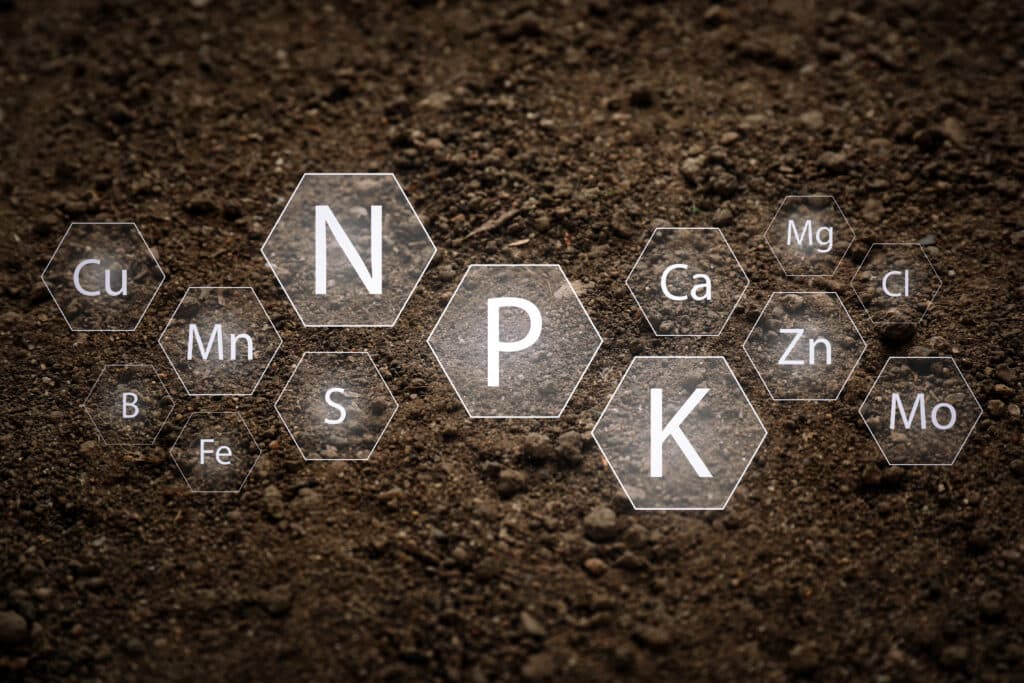
Step Two: Choose Your Application Method
Broadcast Application: Sprinkle granular fertilizer evenly over the soil in the root zone area, then mix it into the top 2-3 inches of soil. This method is suitable for slow-release or granular fertilizers.
Side-Dressing: Create shallow trenches or furrows along the plant’s row or around individual plants, and then apply the fertilizer in these trenches. Cover the fertilizer with soil to prevent direct contact with the plant’s roots, which can cause burning.
Foliar Feeding: Some gardeners use liquid fertilizers applied directly to the leaves for a quick nutrient boost. This is usually done early in the morning or when the plant stomata are open. Be cautious not to overdo it, and read the package instructions for your fertilizer, as foliar feeding can cause leaf burn if not done correctly.
Step 3: If you Used Granular Fertilizer, Be Sure to Water Well After Application
Watering: After applying granular fertilizers, it’s essential to water the soil thoroughly. This helps activate the nutrients and carry them down to the root zone. For liquid fertilizers, water the plants immediately after application.
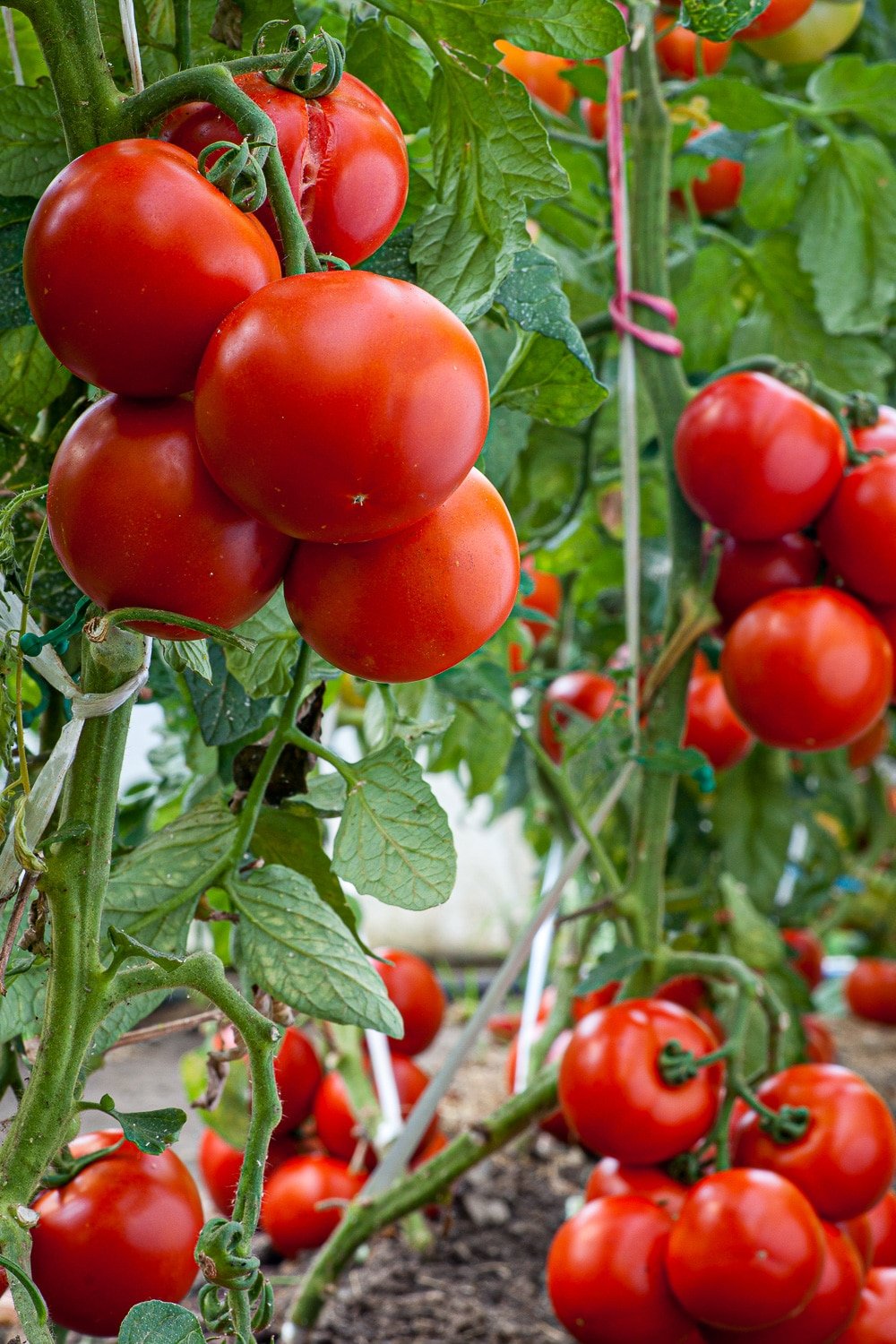
FAQs about Tomato Fertilizers
How often should I fertilize my tomato plants?
For best results, it is recommended to fertilize your tomato plants every two to three weeks during their early growing season and during flower and fruit set. This regular feeding schedule ensures a steady supply of nutrients for healthy plant development and fruit production.
Can I use organic fertilizer for my tomatoes?
Absolutely! Organic fertilizers such as manure, seaweed, bone meal, or fish emulsion are excellent choices for tomato plants. They provide natural nutrients while improving soil health and promoting beneficial microbial activity.
Is it possible to over-fertilize my tomato plants?
Yes, over-fertilizing can harm your tomato plants. It can lead to excessive foliage growth at the expense of fruit production or even burn the plant’s roots. Always follow the recommended dosage instructions provided by the fertilizer manufacturer.
Should I use slow-release or water-soluble fertilizer for tomatoes?
Both types have their advantages. Slow-release fertilizers gradually release nutrients over an extended period, reducing the frequency of application. Water-soluble fertilizers offer quick nutrient uptake but require more frequent application throughout the growing season.
Can I make my homemade tomato fertilizer?
Certainly! Homemade tomato fertilizers can be made using ingredients like banana peels, eggshells, coffee grounds, or compost. These natural alternatives can boost your plants’ nutrients while reducing waste and promoting sustainability.
How long does it take for tomato plants to benefit from fertilizer?
Tomato plants respond quickly to fertilization, with visible results within a week or two. However, individual plant growth rates may vary based on a variety of environmental conditions and overall plant health.
What if I accidentally apply too much fertilizer to my tomato plants?
If you accidentally over-fertilize your tomato plants, flush the soil with water to help dilute the excess nutrients. Avoid further fertilization until the next scheduled application to allow the plant time to recover.
Learn More about Growing Tomatoes
Growing tomatoes is always a gateway into gardening addiction. It was my gateway vegetable; I’ve grown hundreds of varieties and thousands of plants over the years. They are SO much fun to grow, especially if you love to eat them (which we both do!).
Because we’ve grown so many tomatoes, we have loads of extra information to help you in your tomato-growing adventure. Check our guides for:
Learn More About Fertilizers
Each plant in your garden has its own specific fertilizer requirements. Check out these guides to ensure your plants are getting what they need for maximum yields:
Summary: The Importance of Properly Fertilizing Tomatoes
Congratulations! You now have all the essential information on properly fertilizing your tomato plants. By understanding when to fertilize, the best fertilizer options, and how to apply it for maximum growth, you are well-equipped to give your tomatoes the nutrients they need to thrive.
Now that you know the importance of proper tomato fertilization, it’s time to implement this knowledge. Head out to your garden and start nourishing those plants with the right fertilizer at the right time. Your tomatoes will thank you by producing bountiful harvests filled with juicy and flavorful fruits.

Author: Laura Kennedy
Writer & Owner of Little Yellow Wheelbarrow
Laura is a highly skilled gardener and fervent flower enthusiast. Despite her playful battle with plant spacing guidelines, Laura’s work inspires gardeners to create thriving, beautiful spaces that reflect both creativity and sustainability.

